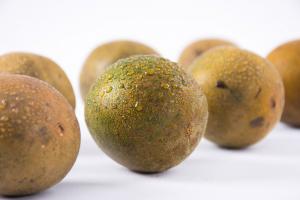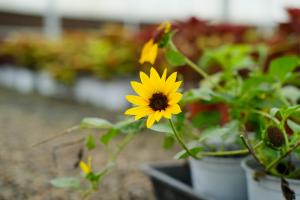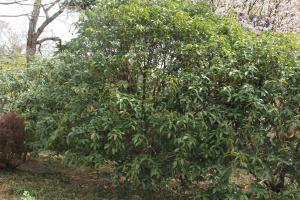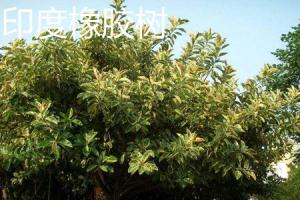Orange peel, let the flowers no longer yellow leaves
Winter is the season when oranges and oranges are on the market in large quantities. They are sour, sweet and delicious. Keep the peel after eating, because orange peel is a very good flower fat

Operation method:
1. Cut the orange peel into thin filaments. The more finely you cut it, the shorter the fermentation time will be

2. Find some plastic bottles, put the orange peel in, and then add water. Be careful not to fill it too full. Close the bottle cap and put it on the windowsill to bask in the sun. Loosen the cap every three days or so to breathe

3. About a month or so, twist the cover to open a small crack. If the taste is slightly sour but not smelly, it is retting. Add 10 times of water to the orange peel fat water, and water the flowers 2 ~ 3 times a month. The flowers will definitely grow wildly and the leaves will never turn yellow again

Banana peel, let the flowers bloom 100
Banana peel is very soft and easy to rot. it is also easy to absorb when used to grow flowers. In addition, banana peel contains phosphorus and potassium, which can help flowers bloom more

Operation method:
1. Collect the banana peel together and dry it in the sun. If there is heating at home, you can dry it on the heating until the banana peel becomes very dry and crumbles as soon as you pinch it

2. Put the dried banana peel into a mortar for mashing garlic and mash it into powder, which is more conducive to the flowers to absorb the nutrition of banana peel

3. Dig 2 ~ 3 small pits with a diameter of about 3cm at the edge of the flowerpot, sprinkle the banana peel powder, and then bury it with soil

4. Use banana peel once a month, which is conducive to the differentiation of flower buds, the growth of more flowers and bones, and the opening of round flower balls

Apple peel makes the root system white and strong
Many flowers originating in the south like slightly acidic flower soil. If the soil is alkaline, it will wither and lose its leaves. If the leftover apple peel is retted into flower soil, the slightly acidic soil will make the acid loving flowers grow more prosperous

Operation method:
1. Prepare a larger empty flowerpot and pad 2 ~ 3cm garden soil at the bottom first

2. Cover the soil with a layer of apple peel. Don't spread it too much. Just a thin layer

3. Then cover it with 3cm thick soil and repeat these two actions until the flowerpot is filled and the top is capped with soil. Cover the flowerpot mouth with a layer of plastic film and tie the mouth tightly

4. After about 2 ~ 3 months, turn the pot soil. If the soil is black, it will be retted. The retting soil of apple peel is rich in nutrition. Now start retting, and you can use it when you change the basin next spring

Pineapple peel, let the flowers grow and flourish
Pineapple peel can be made into fruit enzymes. It is pure natural and environmentally friendly. It is especially suitable for flowers that like low acid growth environment, such as camellia, Rhododendron, gardenia and so on

Operation method:
1. Prepare a plastic bucket, and then put the pineapple skin in it. Put the pineapple skin in one-third or one-quarter of the barrel

2. Add water and a spoonful of brown sugar into the bucket. The ratio of water to brown sugar is 10:1. Put it in a well illuminated place and it can be used after about 2 ~ 3 months

3. When the enzyme is retted, it will not only have no odor, but also have a fruity smell. Use a bottle cap to mix 1 liter of water each time and water the flowers. Moreover, the enzyme will not expire. The longer the fermentation time, the better. Soaking in a bucket can take a long time

Bagasse, make the soil fertile and breathable
Sugarcane is sweet and delicious. People who sell freshly squeezed sugarcane juice are often seen on the street. The crushed bagasse is thrown away as garbage. In fact, bagasse can also be used to raise flowers

Operation method:
1. Collect some leftover bagasse and put it in the sun for 3 ~ 5 days

2. Put bagasse and garden soil into the flower pot in the ratio of 1:1, add 5% bean cake, and then mix well with tools. Finally, seal the basin mouth with plastic cloth for fermentation

3. After about 2 ~ 3 months, when bagasse has turned black and integrated with soil, it will be retted. The soil retted with bagasse is loose, breathable and has good drainage. It is suitable for Clivia, hupilan and other flowers

Fire dragon peel, make the leaves green
Pitaya skin is very nutritious, containing anthocyanins, calcium, phosphorus and other trace elements. It is also a good raw material for making flower fertilizer

Operation method:
1. Cut the Pitaya peel into pieces, put it into a plastic bottle, and add water and brown sugar. The ratio of peel, brown sugar and water is 3:1:10

2. Install the back cover, put on the bottle cap, and loosen the cover every 2-3 days, but don't fully open it, otherwise it will affect the fermentation progress

3. Pitaya peel can be retted into enzymes in about 3 months. Every time you water the flowers, dilute it with about 1000 times of water and then use it again

4. Watering flowers with enzyme water has many benefits. It can not only provide nutrients, but also adjust the acidity and alkalinity of the soil, so that acid loving flowers grow wildly and leaves are green

This is the introduction to the fattening methods of various fruit skins
Is it environmentally friendly and practical
Taking advantage of the cold weather and light odor
Now try it
Don't forget to share it with more flower friends

 how many times do yo...
how many times do yo... how many planted tre...
how many planted tre... how many pine trees ...
how many pine trees ... how many pecan trees...
how many pecan trees... how many plants comp...
how many plants comp... how many plants can ...
how many plants can ... how many plants and ...
how many plants and ... how many pepper plan...
how many pepper plan...































